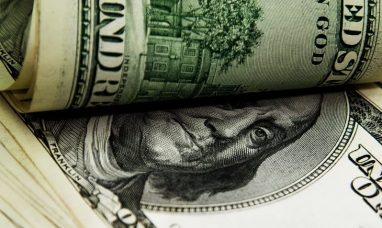The 10-year T-note yield soared to 4.880% on Wednesday, marking its highest point in 16 years. Over the past month, the yield has surged by more than 65 basis points (bp), and since the beginning of the year, it has climbed more than 80 bp. This upward trajectory can be attributed to a combination of factors. The Federal Reserve’s hawkish stance, indicating a prolonged period of higher interest rates, is a primary driver. Concerns surrounding growing U.S. budget deficits, leading to increased Treasury securities issuance, also contribute to rising yields. Additionally, worries about escalating oil and gasoline prices further fuel inflation concerns.
The spike in bond yields has triggered apprehension reminiscent of the financial market turmoil that led to the collapse of Silicon Valley Bank and regional bank meltdowns in March. Elevated yields also pose a threat to the economy as they raise borrowing costs, potentially dampening both consumer spending and corporate capital investments. Federated Hermes highlights the feedback loop, which starts to stoke fears of a possible economic hard landing.
The upswing in long-term yields, although helping to restrain inflation and slow economic growth, occurs against a backdrop of various economic challenges. These include ongoing autoworker strikes and the resumption of student loan payments. Furthermore, the Federal Reserve’s recent hawkish comments have compounded the rise in yields, essentially giving the market the green light to keep pushing rates higher.
Notably, the Fed has not actively resisted the surge in bond yields and has even made comments encouraging the trend. New York Fed President Williams, for instance, stated that even if the Fed stops raising interest rates, policymakers would maintain high rates for an extended period to bring inflation down to the 2% target. This lack of pushback has led some to believe that the Fed is comfortable with rising yields. Atlanta Fed President Bostic emphasized the Fed’s commitment to elevated interest rates, asserting that they have “a ways to go” regarding inflation control.
The future trajectory of T-note yields remains uncertain. They could continue to climb unless U.S. inflationary pressures significantly weaken or there is a sudden downturn in the labor market. However, the increasing bond yields also heighten the risk of a financial market crisis. Former Fed Vice Chair Clarida noted that if these movements become extreme or persistent, it could prompt the Fed to take action.
Some analysts posit that only a major equity market meltdown could rekindle demand for government bonds, subsequently driving yields lower. Barclays Plc acknowledges the absence of a specific yield threshold that guarantees a bond rally. In the short term, one scenario for a bond rally could involve a sharp decline in risk assets in the coming weeks.
In summary, the surge in bond yields is a multifaceted issue driven by a confluence of factors, including the Fed’s stance, fiscal deficits, and inflation concerns. Its implications for the broader economy and financial markets are complex and contingent on a variety of economic developments.
Featured Image: Freepik















